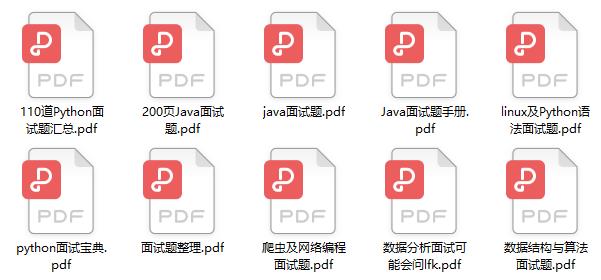C语言入门基础之输入和输出
Posted 程序员大咖
tags:
篇首语:本文由小常识网(cha138.com)小编为大家整理,主要介绍了C语言入门基础之输入和输出相关的知识,希望对你有一定的参考价值。
????????关注后回复 “进群” ,拉你进程序员交流群????????
作者丨写代码的牛顿
来源丨编程学习总站
01
—
标准输入和标准输出
在C语言里要使用标准输入和标准输出必须包含stdio.h头文件,常用的标准输出和标准输入函数是printf和scanf,其中printf用来在标准输出中输出信息,而函数scanf则用来从标准输入中读取信息。
那么什么是标准输入和标准输出呢?在Linux中进程通常会自动打开三个标准文件,即标准输入文件(stdin)通常对应文件描述符0;标准输出文件(stdout)对应文件描述符1和标准错误输出文件对应文件描述符2(stderr)。进程将从标准输入文件中读取输入数据,将正常输出数据输出到标准输出文件,而将错误信息送到标准错误文件中。
02
—
标准输入函数
在stdio.h中scanf声明如下:
/* Read formatted input from stdin.
This function is a possible cancellation point and therefore not
marked with __THROW. */
extern int scanf (const char *__restrict __format, ...) __wur;
使用Mac或Linux的同学,在终端上输入man scanf回车即可学习scanf函数的用法。我们可以看到注释上说明,scanf从标准输入stdin输入读取数据,在glibc中stdin的定义如下:
/*stdio.c*/
FILE *stdin = (FILE *) &_IO_2_1_stdin_;
/*libio.h*/
extern struct _IO_FILE_plus _IO_2_1_stdin_;
/*libioP.h*/
struct _IO_FILE_plus
{
FILE file;
const struct _IO_jump_t *vtable;
};从以上代码我们可以知道,最终stdin是一个FILE文件流指针,我能继续追踪FILE类型为何物。
/*
* stdio state variables.
*
* The following always hold:
*
* if (_flags&(__SLBF|__SWR)) == (__SLBF|__SWR),
* _lbfsize is -_bf._size, else _lbfsize is 0
* if _flags&__SRD, _w is 0
* if _flags&__SWR, _r is 0
*
* This ensures that the getc and putc macros (or inline functions) never
* try to write or read from a file that is in `read' or `write' mode.
* (Moreover, they can, and do, automatically switch from read mode to
* write mode, and back, on "r+" and "w+" files.)
*
* _lbfsize is used only to make the inline line-buffered output stream
* code as compact as possible.
*
* _ub, _up, and _ur are used when ungetc() pushes back more characters
* than fit in the current _bf, or when ungetc() pushes back a character
* that does not match the previous one in _bf. When this happens,
* _ub._base becomes non-nil (i.e., a stream has ungetc() data iff
* _ub._base!=NULL) and _up and _ur save the current values of _p and _r.
*
* NB: see WARNING above before changing the layout of this structure!
*/
typedef struct __sFILE {
unsigned char *_p; /* current position in (some) buffer */
int _r; /* read space left for getc() */
int _w; /* write space left for putc() */
short _flags; /* flags, below; this FILE is free if 0 */
short _file; /* fileno, if Unix descriptor, else -1 */
struct __sbuf _bf; /* the buffer (at least 1 byte, if !NULL) */
int _lbfsize; /* 0 or -_bf._size, for inline putc */
/* operations */
void *_cookie; /* cookie passed to io functions */
int (* _Nullable _close)(void *);
int (* _Nullable _read) (void *, char *, int);
fpos_t (* _Nullable _seek) (void *, fpos_t, int);
int (* _Nullable _write)(void *, const char *, int);
/* separate buffer for long sequences of ungetc() */
struct __sbuf _ub; /* ungetc buffer */
struct __sFILEX *_extra; /* additions to FILE to not break ABI */
int _ur; /* saved _r when _r is counting ungetc data */
/* tricks to meet minimum requirements even when malloc() fails */
unsigned char _ubuf[3]; /* guarantee an ungetc() buffer */
unsigned char _nbuf[1]; /* guarantee a getc() buffer */
/* separate buffer for fgetln() when line crosses buffer boundary */
struct __sbuf _lb; /* buffer for fgetln() */
/* Unix stdio files get aligned to block boundaries on fseek() */
int _blksize; /* stat.st_blksize (may be != _bf._size) */
fpos_t _offset; /* current lseek offset (see WARNING) */
} FILE;看到这个结构体内部一大堆成员变量不要慌,我们重点关注里面的close、read、seek和write函数指针。我们在调用scanf函数时正是通过这几个函数指针间接调用系统函数close、read、seek和write实现标准输入关闭、读取、偏移和写功能。
int (* _Nullable _close)(void *);
int (* _Nullable _read) (void *, char *, int);
fpos_t (* _Nullable _seek) (void *, fpos_t, int);
int (* _Nullable _write)(void *, const char *, int);从函数声明我们知道scanf返回一个int型返回值,在调用时scanf,返回正整数表示从标准输入读取到的有效数据数量,返回0表示没有输入或者输入不正确,返回负数表示发生了从标准输入读取数据发生了错误。下面我们使用scanf从标准输入读取数据的代码。
int num = 0;
float f_num = 0;
int count = scanf("%d", &num);
scanf("%f", &f_num);
scanf_s("%d", &num);在scanf中输入数据并将数据保存在变量num和f_num中,调用scanf输入数据必须要用%,%d表示输入一个整数,%f表示输入一个单精度浮点数,其他数据类型的数据参考C语言入门基础之变量和数据类型,count保存scanf输入数据的有效数。看到这里可能有人会有疑问,为什么调用scanf从标准输入信息,需要对变量取地址,为什么要设计成这样?这里就要涉及到后面会学到的知识:指针。
在C语言里函数传参方式有2种,一种是传值另外一种是传指针。通过传值方式形参拷贝实参,得到一个实参副本对实参副本进行修改不会影响实参,而传指针方式,将会得到实参的地址,通过指针解引用可以间接修改实参的值。那么回到scanf函数那里,我们通过对变量进行取址,scanf函数内部有一个指针,将变量地址值赋给内部指针,再将标准输入的值赋值给实参,实参变量因此获得标准输入的值。
在代码片段我们还看到scanf_s这个函数(scanf_s不是C标准库函数),由于scanf函数并不是安全的,在有些编辑器上默认禁止使用scanf,如果使用则需要打开一个宏,而scanf_s是一些厂商提供的scanf函数安全版本,两者使用方法一模一样。
03
—
标准输出函数
在stdio.h中printf函数声明如下:
/* Write formatted output to stdout.
This function is a possible cancellation point and therefore not
marked with __THROW. */
extern int printf (const char *__restrict __format, ...);看到这里是不是很熟悉?printf函数的返回值也是int型,调用printf函数将会返回输出字符个数,出错则返回一个负数。同样在Linux/Mac平台的终端上输入man printf函数可以查看函数的详细使用方法(任何C标准函数都可以在Linux/Mac平台上输入man+函数名的方式查看函数使用方法)。下面是我们使用printf函数在标准输出中输出数据的代码。
int output_count = printf("num = %d\\n", num);
printf("output_count = %d\\n", output_count);
output_count = printf("f_num = %f\\n", f_num);
printf("output_count = %d\\n", output_count);在代码片段里我们看到一个\\n字符,在C语言里这是一个换行符。看到这里是不是又有疑问了,为什么printf函数输出变量值时不需要对变量取地址?这就回到前面我们说过的问题了,在C语言里传值,形参是实参的副本,形参修改了不会影响到实参。而printf函数只是在标准输出中输出信息,不会修改实参的值,因此使用传值方式。
那么标准输出是什么呢?从print函数声明代码注释上看,标准输出正是stdou,我们继续在glibc中继续追踪stdout到底是什么?在stdout.c中我们看到stdout和stderr定义如下:
FILE *stdout = (FILE *) &_IO_2_1_stdout_;
FILE *stderr = (FILE *) &_IO_2_1_stderr_;我们发现stdout、stderr和stdin的定义一模一样都是一个FILE类型指针,那么使用方式就和stdin一样了,区别则在于stdin和文件描述符0绑定,stdout和文件描述符1绑定,stderr和文件描述符2绑定。
04
—
结语
后面讲解C语言知识时我会穿插有Linux相关知识,讲解C语言不能仅仅停留在语法层面。据我的观察,很多人学习了C语言语法后很迷茫,不知道C语言能做什么,根本原因就是你没有了解某个平台的系统编程API。Linux是一个开源操作系统,结合Linux学习C语言将会更加有趣,在Linux上进行C语言开发绝对是最佳选择。
-End-
最近有一些小伙伴,让我帮忙找一些 面试题 资料,于是我翻遍了收藏的 5T 资料后,汇总整理出来,可以说是程序员面试必备!所有资料都整理到网盘了,欢迎下载!

点击????卡片,关注后回复【面试题】即可获取
在看点这里![]() 好文分享给更多人↓↓
好文分享给更多人↓↓
以上是关于C语言入门基础之输入和输出的主要内容,如果未能解决你的问题,请参考以下文章